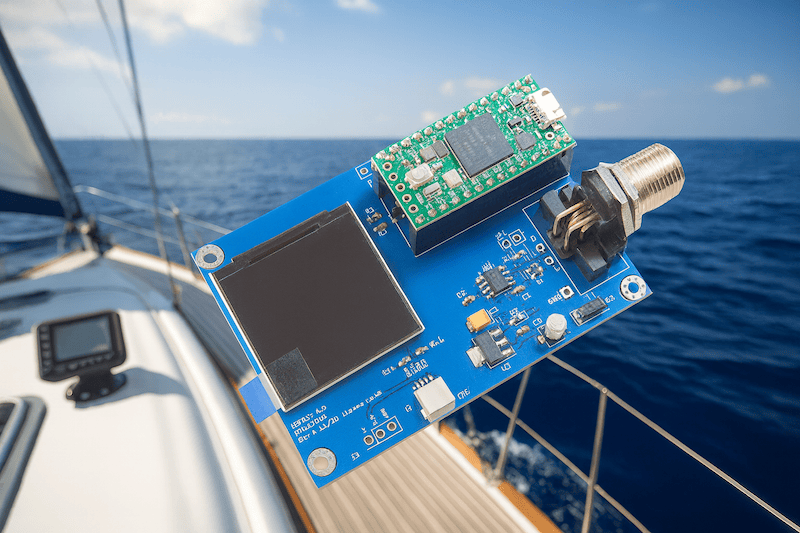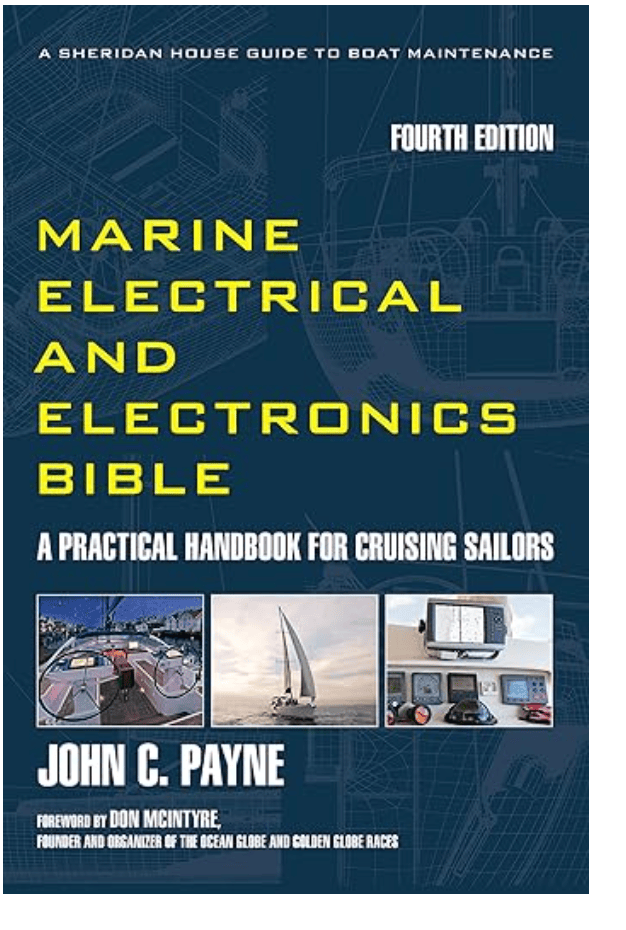Recent Posts
Power and Precision on the Water: The Teensy 4.0 with NMEA 2000 Connector and IPS Display
Posted by on
 In the world of marine electronics and embedded development, compact size rarely comes with uncompromising power. That changes with the introduction of the Teensy 4.0 paired with an NMEA 2000 connector and a crisp 240×240 IPS LCD. This unique combination delivers a level of performance and integration that appeals equally to hobbyists, professional developers, and anyone interested in taking marine instrumentation to the next level.
In the world of marine electronics and embedded development, compact size rarely comes with uncompromising power. That changes with the introduction of the Teensy 4.0 paired with an NMEA 2000 connector and a crisp 240×240 IPS LCD. This unique combination delivers a level of performance and integration that appeals equally to hobbyists, professional developers, and anyone interested in taking marine instrumentation to the next level.
At the heart of the system lies the Teensy 4.0 microcontroller, powered by the NXP i.MXRT1062 ARM Cortex-M7 processor running at an astonishing 600 megahertz. For a board that fits comfortably in the palm of your hand, the processing capabilities are extraordinary. With 2 megabytes of flash memory and 1 megabyte of RAM, including tightly coupled memory for ultra-fast operations, the Teensy 4.0 offers the kind of raw computing strength that was once reserved for full-scale development platforms. It supports advanced digital signal processing, hardware floating-point calculations, and a wide array of input and output options, making it suitable for demanding real-time applications. Developers can rely on this microcontroller to handle heavy data processing, sensor fusion, and complex communication tasks without hesitation.
The inclusion of a 1.54-inch IPS LCD display elevates the platform into a true marine-ready solution. With its 240×240 resolution and wide viewing angles, the display is perfect for visualizing live sensor data directly on the device. Imagine a compact, handheld marine dashboard that shows wind speed, GPS position, water depth, or engine performance metrics in real time. The display eliminates the need for external monitors during development or deployment and provides a user-friendly window into the flow of critical data.
Connectivity is just as important as processing power and visualization, which is where the NMEA 2000 connector comes in. Built on CAN bus technology, NMEA 2000 has become the standard for networking on boats and ships, allowing devices from different manufacturers to communicate seamlessly. Unlike its predecessor, NMEA 0183, which was limited to a single talker and listener, NMEA 2000 supports a multi-talker, multi-listener architecture. This means a single sensor can share data with multiple displays, autopilots, and monitoring systems across the same backbone. By integrating a Micro-C connector directly into the board, this Teensy solution taps into the shared power and data bus with minimal wiring effort. Power is drawn directly from the network, while the board contributes data back to the system, making it a fully integrated marine component.
The potential applications for this board are virtually endless. In a marine environment, it can act as a compact instrumentation display, showing a sailor or captain the critical data needed to make informed navigation and safety decisions. For engineers and developers, the platform can serve as a diagnostic tool, simulating or reading parameter group numbers (PGNs) to test other devices and systems. As a portable data logger, it can record metrics such as speed, heading, and temperature, storing them locally or presenting them on the built-in display for instant feedback. Its Qwiic connector opens the door to additional sensors, meaning developers can blend NMEA 2000 data with non-standard environmental or motion sensors to create hybrid dashboards. In educational settings, this board is an ideal tool for teaching CAN bus principles, NMEA 2000 standards, and real-world embedded systems design.
What makes the Teensy 4.0 with NMEA 2000 connector and IPS display so compelling is the seamless fusion of cutting-edge microcontroller performance with the practical requirements of marine networking. It is a rare product that appeals not only to electronics enthusiasts but also to professionals who need reliable, field-ready solutions. Whether used to prototype the next generation of marine electronics, to create a custom autopilot interface, or simply to monitor vessel data in a new way, this board delivers versatility, power, and ease of use in equal measure.
For anyone exploring marine electronics or embedded systems development, the message is clear: this is more than just another microcontroller board. It is a complete solution that empowers innovation on the water, in the lab, and everywhere in between. More information...
The Marine Electrical and Electronics Bible is the definitive hands-on guide for sailors and boat owners who want reliable, easy-to-follow advice on everything that powers and connects their vessel. Covering cruising yachts, racing yachts, trawlers, motorboats, and even superyachts, this indispensable resource explains in clear, practical language how to select, install, maintain, and troubleshoot every major electrical and electronic system on board.
Packed with more than two hundred illustrations—ranging from wiring diagrams and charts to tables and graphs—the book makes even the most complex systems accessible. Rather than getting bogged down in abstract theory, the focus is firmly on real-world solutions. Each chapter is carefully structured for quick reference, combining technical explanations with step-by-step troubleshooting. The author brings decades of professional marine electrical expertise and firsthand cruising experience, enriched by ongoing collaboration and shared knowledge from fellow sailors around the globe.
The marine electrical section has been thoroughly updated to reflect the latest in battery technology and charging systems. It also explores renewable energy options such as wind, water, and solar power, and includes an in-depth look at marine diesel engines and related electrical components.
The marine electronics section keeps pace with modern technology, featuring up-to-date coverage of AIS, GMDSS, radar, and more. Its treatment of communication systems is particularly valuable, with a detailed listing of radio frequencies and weather broadcast schedules for major sailing areas worldwide. From HAM and HF/SSB to VHF, NAVTEX, and satellite communications, the guide explains each system clearly and practically. It even highlights today’s most useful boating apps to ensure skippers stay connected wherever they sail.
The closing chapters are a gold mine of troubleshooting and maintenance advice, supported by a global directory of service providers. Whether you are refitting a vessel, upgrading its systems, or simply ensuring your boat is voyage-ready, this book remains the trusted, comprehensive companion for sailors who value safety, independence, and confidence at sea. More information...
 Loading... Please wait...
Loading... Please wait...

